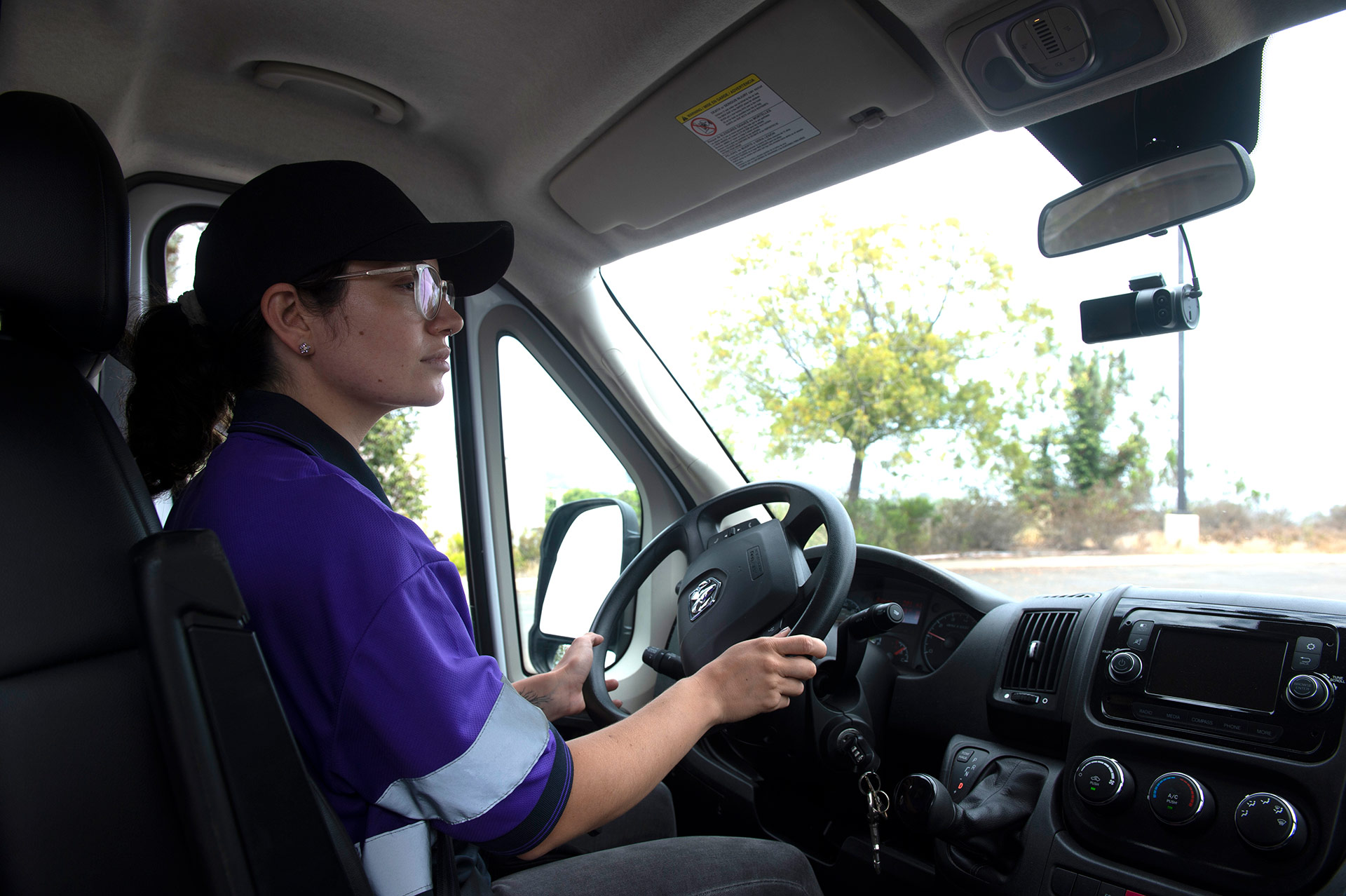Why the Best Dash Cam Isn’t Just a Dash Cam

Dash cams are the new normal in both private and commercial vehicles. The best vehicle dash cams record high-quality video and audio that can be very useful if you’re ever involved in an accident. Any good dash cam can help after the fact, but if you want to know how to find a dash cam best suited for helping to prevent collisions and gaining insight into day-to-day operations there is much more to explore. Let’s take a look at why the best dash cam is more than just a dash cam.
Top dash cam benefits
A fleet dash cam is useful for providing evidence after something goes wrong. Not only can video footage prove who is at fault in an accident, it can be helpful for those who want to review and coach the behaviour of their drivers. Some dash cams even have dual cameras so that they can record the interior of the car as well as the road ahead. This is crucial when you want to examine risky driver behaviours such as following too closely. The best dash cams provide high-resolution video good enough to read road signs outside the vehicle and identify what is going on inside the vehicle as well, helping to establish exactly what was occurring just before an incident.
A dash cam is not just a snare to catch irresponsible or inexperienced drivers. Cameras help protect good drivers against passengers or nearby vehicles that make poor decisions. One of the most popular reasons fleets install dash cams is to help exonerate drivers from false claims and expensive legal quagmires that could put their jobs in jeopardy. With a good dash cam, drivers won’t have to worry about “he said, she said” situations ever again.
Reliable dash cams + telematics = context
In a commercial or professional driving setting, vehicle cameras are just one part of a full telematics solution. In addition to video, modern telematics systems typically include engine control modules, advanced driver assistance systems, electronic logging devices, and GPS fleet tracking. These technologies provide actionable data to help find ways to refine operations—in other words, fleets are installing vehicle cameras not to catch driver mistakes, but to improve overall fleet performance.
Commercial fleet management has long relied on vehicle telematics to track vehicle location, speed, and operational trends. Fleet telematics systems have evolved to provide a sophisticated pipeline of information about the vehicle and driver over high-speed cellular or wireless connections—information even the best dash cam can’t provide on its own. That’s why modern fleet management solutions integrate sensor telematics data with footage from interior and exterior cameras, sent over the same wireless connection.
Multi-camera video telematics systems include both a forward-facing dash cam and an interior camera to capture driver behaviour. By correlating footage from multiple cameras with data from the GPS, engine computer, accelerometer (G-Force), and other sources, it is possible to see what a driver was doing right before an incident. This merging and analysis of information from multiple sensors is called sensor fusion, and it provides much deeper insight than would be possible examining the different data sources individually.
Analysing this data provides context that can help companies identify risky behaviours or routes as well as other insights that can reduce the frequency of collisions, near-misses, and infractions. The benefits are tangible, and demand is high as the mass adoption of video systems is one of the important modern telematics trends.
Machine vision and artificial intelligence use context to predict risk
Machine vision and artificial intelligence (MV+AI) can use rich context to automate the identification of risky behaviours. For example, Lytx technology can detect a rolling stop at a stop sign by combining machine vision with data from the GPS, accelerometer, and the vehicle’s on-board computers. Today’s technology can use a dash cam video feed to detect risky behaviours such as cell phone use or eating while driving. When these behaviours are combined with other data and analysed over time, AI algorithms can reveal a bigger picture of risk, inferences about the real world to improve driver safety. As the AI gains experience, it is able to make more accurate predictions about the state of the vehicle, the driver, and the road to determine whether a dangerous situation is developing.
What is the best dash cam?
The best dash cam is much more than an in-dash video recorder. It combines multiple high-quality video streams with sophisticated data from a variety of sensors, then analyses this rich pipeline of information with AI to build a predictive risk model that can help drivers and fleet managers see and avoid dangerous situations before they occur. The state of the art Lytx Surfsight® dash cam is superior to traditional dash cams by using machine vision with artificial intelligence to quickly and accurately identify important moments.
Contact Lytx for more information on how our customizable solutions and Surfsight® camera can be integrated into your fleet.
